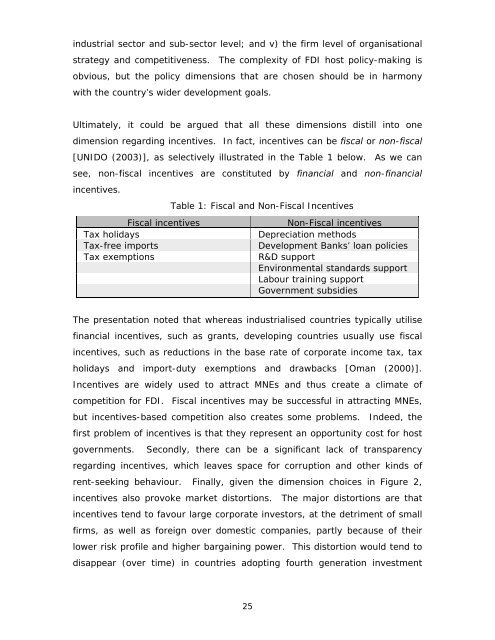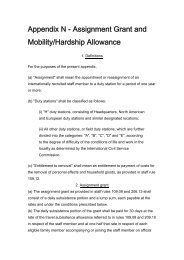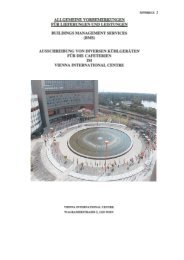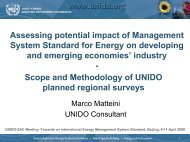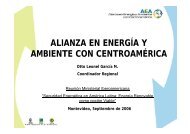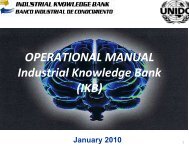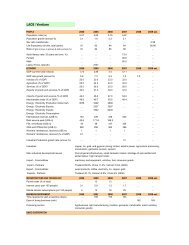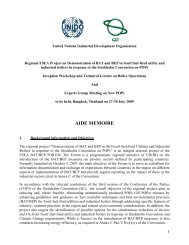Foreign direct investment in Southeast Asia: - Regional Office China
Foreign direct investment in Southeast Asia: - Regional Office China
Foreign direct investment in Southeast Asia: - Regional Office China
You also want an ePaper? Increase the reach of your titles
YUMPU automatically turns print PDFs into web optimized ePapers that Google loves.
<strong>in</strong>dustrial sector and sub-sector level; and v) the firm level of organisationalstrategy and competitiveness. The complexity of FDI host policy-mak<strong>in</strong>g isobvious, but the policy dimensions that are chosen should be <strong>in</strong> harmonywith the country’s wider development goals.Ultimately, it could be argued that all these dimensions distill <strong>in</strong>to onedimension regard<strong>in</strong>g <strong>in</strong>centives. In fact, <strong>in</strong>centives can be fiscal or non-fiscal[UNIDO (2003)], as selectively illustrated <strong>in</strong> the Table 1 below. As we cansee, non-fiscal <strong>in</strong>centives are constituted by f<strong>in</strong>ancial and non-f<strong>in</strong>ancial<strong>in</strong>centives.Table 1: Fiscal and Non-Fiscal IncentivesFiscal <strong>in</strong>centivesTax holidaysTax-free importsTax exemptionsNon-Fiscal <strong>in</strong>centivesDepreciation methodsDevelopment Banks’ loan policiesR&D supportEnvironmental standards supportLabour tra<strong>in</strong><strong>in</strong>g supportGovernment subsidiesThe presentation noted that whereas <strong>in</strong>dustrialised countries typically utilisef<strong>in</strong>ancial <strong>in</strong>centives, such as grants, develop<strong>in</strong>g countries usually use fiscal<strong>in</strong>centives, such as reductions <strong>in</strong> the base rate of corporate <strong>in</strong>come tax, taxholidays and import-duty exemptions and drawbacks [Oman (2000)].Incentives are widely used to attract MNEs and thus create a climate ofcompetition for FDI. Fiscal <strong>in</strong>centives may be successful <strong>in</strong> attract<strong>in</strong>g MNEs,but <strong>in</strong>centives-based competition also creates some problems. Indeed, thefirst problem of <strong>in</strong>centives is that they represent an opportunity cost for hostgovernments. Secondly, there can be a significant lack of transparencyregard<strong>in</strong>g <strong>in</strong>centives, which leaves space for corruption and other k<strong>in</strong>ds ofrent-seek<strong>in</strong>g behaviour. F<strong>in</strong>ally, given the dimension choices <strong>in</strong> Figure 2,<strong>in</strong>centives also provoke market distortions. The major distortions are that<strong>in</strong>centives tend to favour large corporate <strong>in</strong>vestors, at the detriment of smallfirms, as well as foreign over domestic companies, partly because of theirlower risk profile and higher barga<strong>in</strong><strong>in</strong>g power. This distortion would tend todisappear (over time) <strong>in</strong> countries adopt<strong>in</strong>g fourth generation <strong><strong>in</strong>vestment</strong>25


